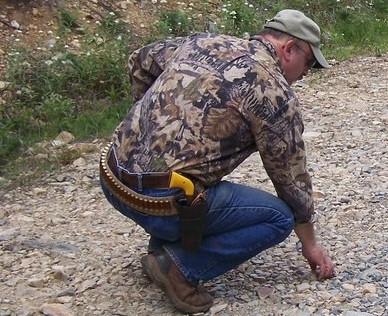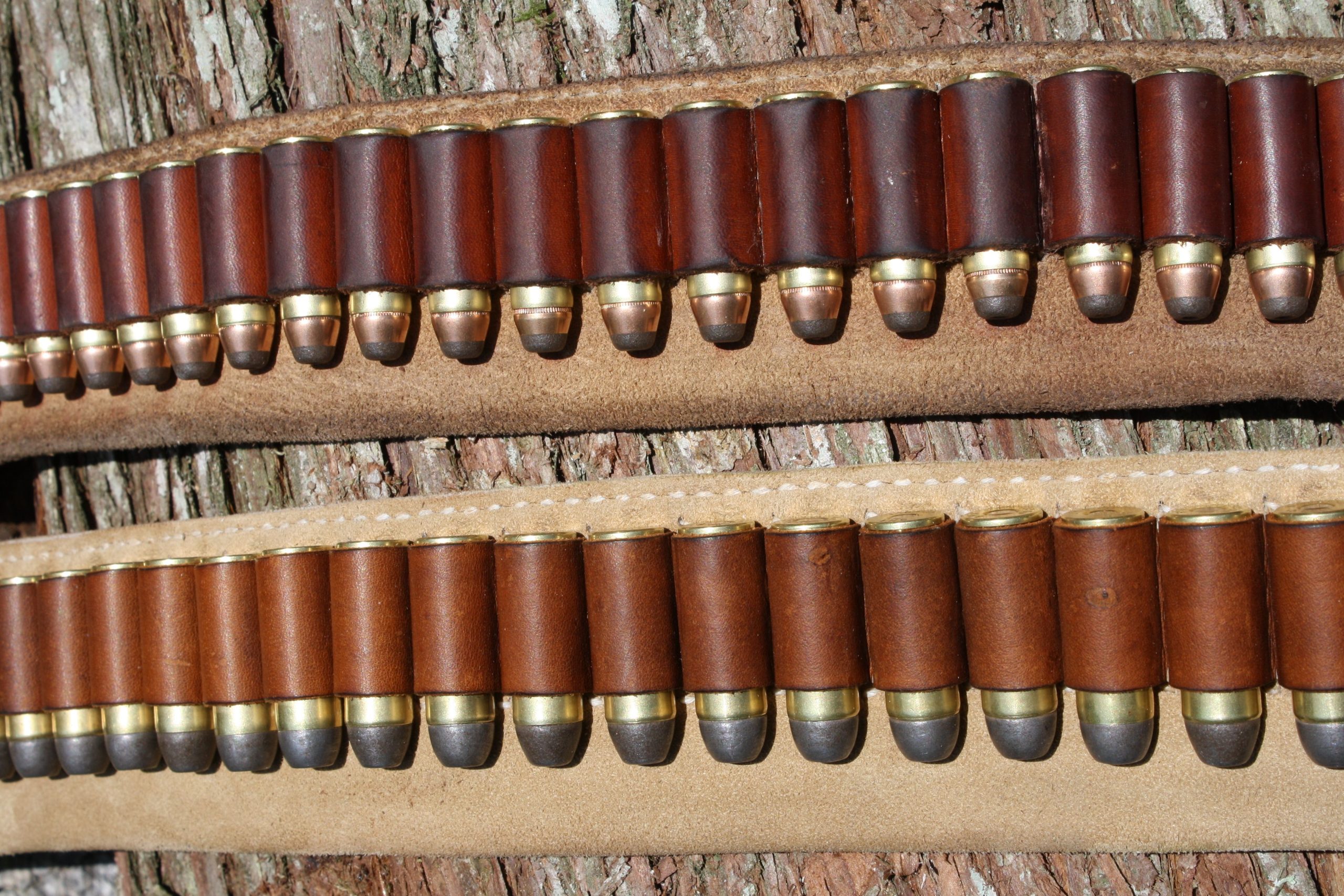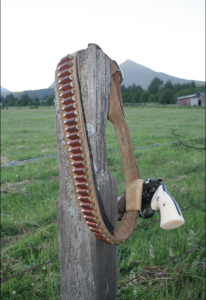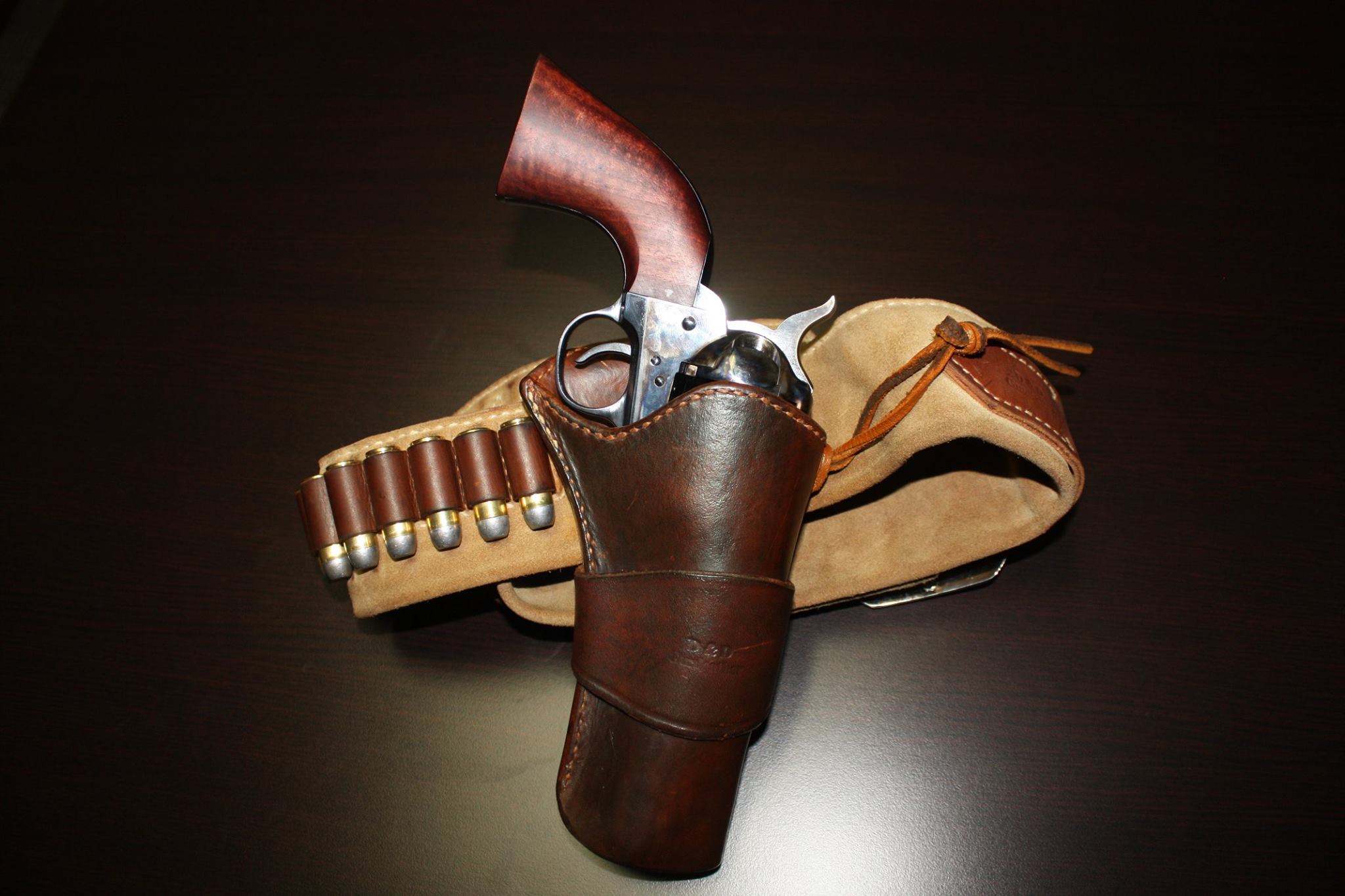
By Dave Workman
Editor-in-Chief
Decades ago, the late John Wayne began appearing in westerns wearing a rough-out cartridge belt and the design seemed to strike a chord with lots of shooters who found the idea to be not only eye-catching, but quite practical.
In the days when I operated a one-man leather shop, I experimented with the design concept and it did not take long to understand just how functional this sort of cartridge belt can be.
Made by folding over a long strip of either suede or thin saddle leather to create a double-thick belt which is then stitched together across the top, and subsequently anchored together more firmly by the stitching which secures the cartridge loops, this concept hits its stride.

Traditional cartridge belts might feature a smooth inner lining, especially those of Buscadero-type designs. The result is that these belts tend to move around, even when buckled tightly. This does not happen with a rough-out design, as the surface does not slide against fabric, especially denim. The effect seems almost like the inner surface of the belt has some sort of adhesive.
Having built cartridge belts for both .41 Magnum and .45 Colt cartridges, something else became apparent over the course of time. As rough-out belts age through use and even exposure to the elements, they become even less likely to shift around during a day in the field.
Out of curiosity some years back, I did a little snooping around to see where this design idea originated. I could not find an original source, but in the process discovered several companies build such belts, so they are available.

There is more to just folding over a piece of leather and stitching it together with a belt buckle and billet. I personally do not recommend treating a rough-out cartridge belt with any kind of oil to protect the leather. What I have found that works rather well to keep the leather from being soaked is a spray-on silicone, marketed under several different brand names and it works on suede, outerwear, boots and other materials. These products can be found in hardware stores and even supermarkets in the shoe care section. Just remember to do your spraying outside!
The cartridge belts I constructed were time consuming to assemble, but they’ve never failed. I did lots of hand-stitching and I used the best waxed linen thread I could find. Leather for these belt projects came from either Tandy or another leather wholesaler in the Seattle area.
Rough-out belts will get dirty. It’s the nature of the beast, but this simply adds to their visual appeal while taking nothing away from functionality.
If the gun belt does get wet, just let it air dry after removing all of the cartridges. A properly treated cartridge belt shouldn’t get completely soaked unless you go swimming while wearing it.
My cartridge belts were made with 36 loops, regardless of caliber; I worked out a formula years ago about the actual spacing of the loop leather between vertical stitching, since I’ve never cared for cartridge loops pushed through slots in the belt as they seem to loosen or stretch over time. While 36 cartridges may seem like a lot, if you’re remote camping where a store may be a minimum of 30 miles or more away, it’s always comforting to know there are spare rounds available in a pinch.

A good cartridge belt should be a minimum of 2-inches wide, and mine go 2½ or better. Some of these belts are reinforced at stress points, such as where the holster will ride, just to prevent the belt from collapsing into nothing more than a soft leather sash.
A cartridge belt should last a lifetime, provided it is well maintained. Like any other product, use it but don’t abuse it, and above all, wear it in good health!



